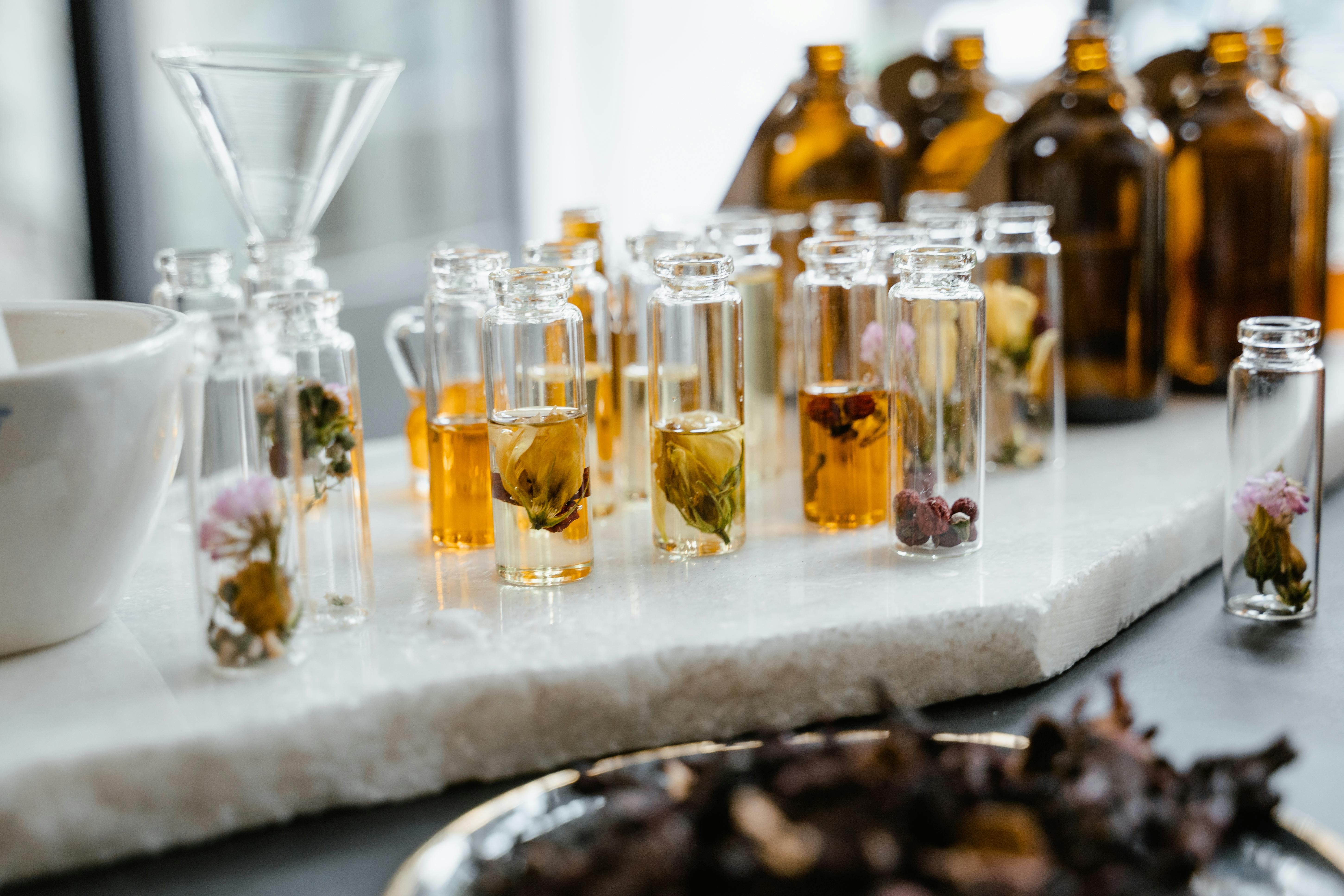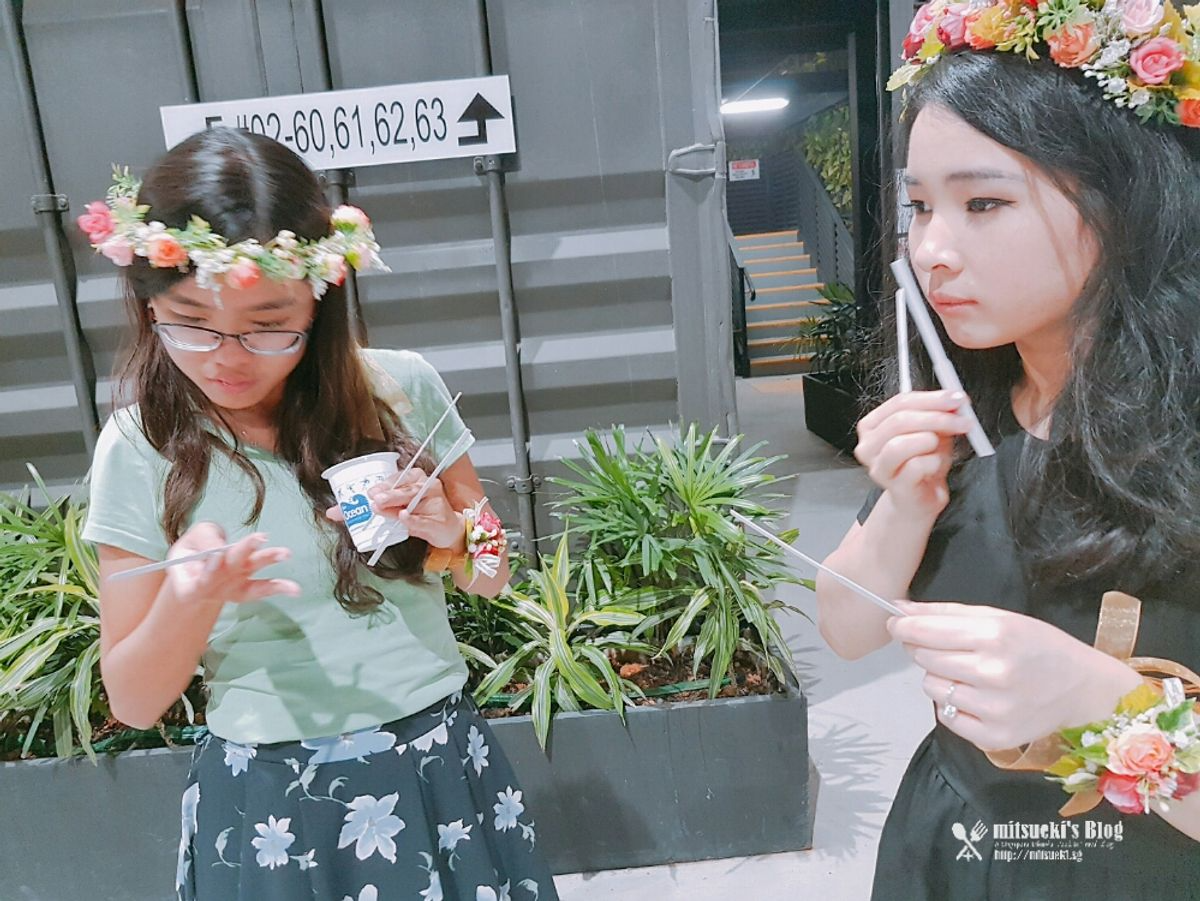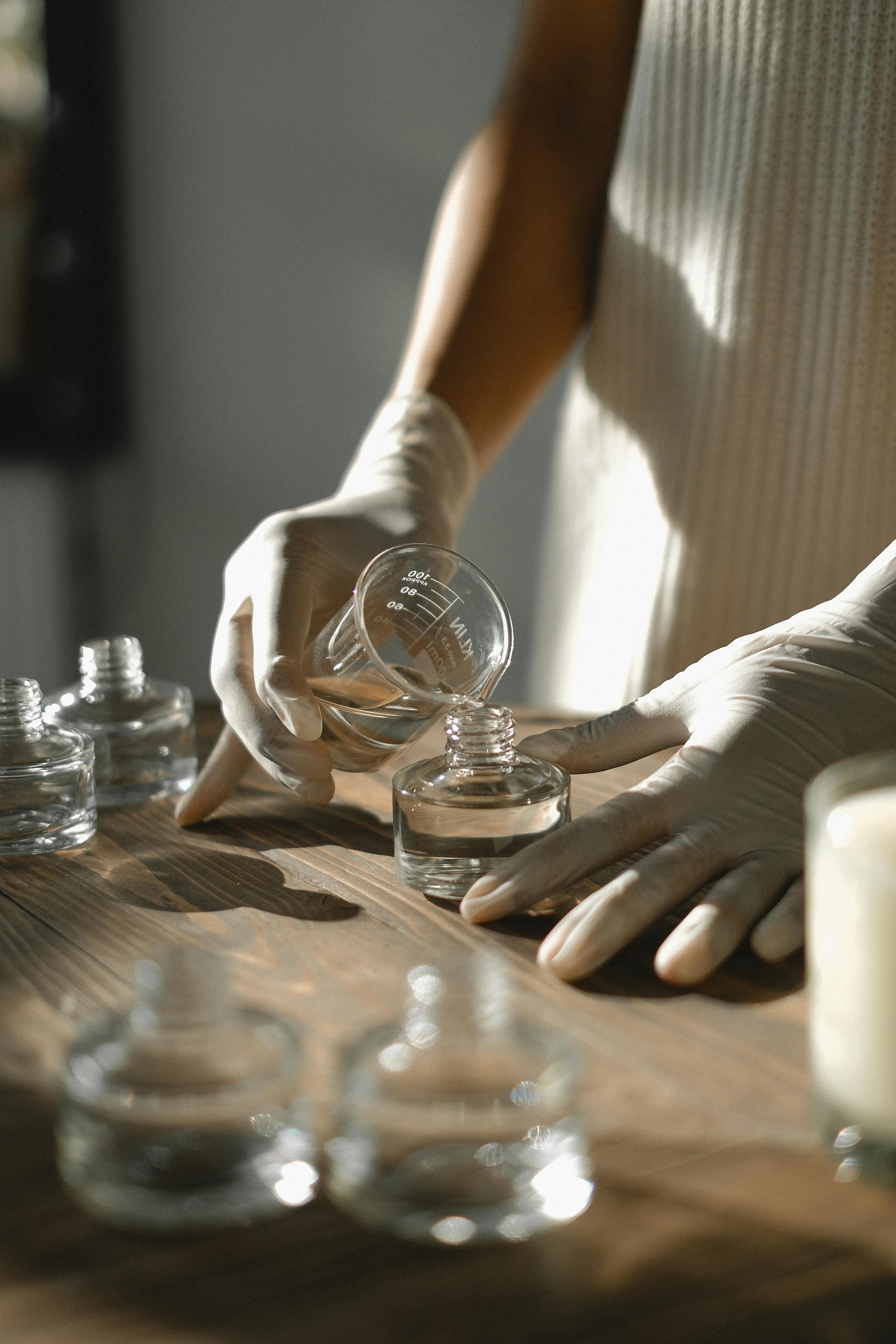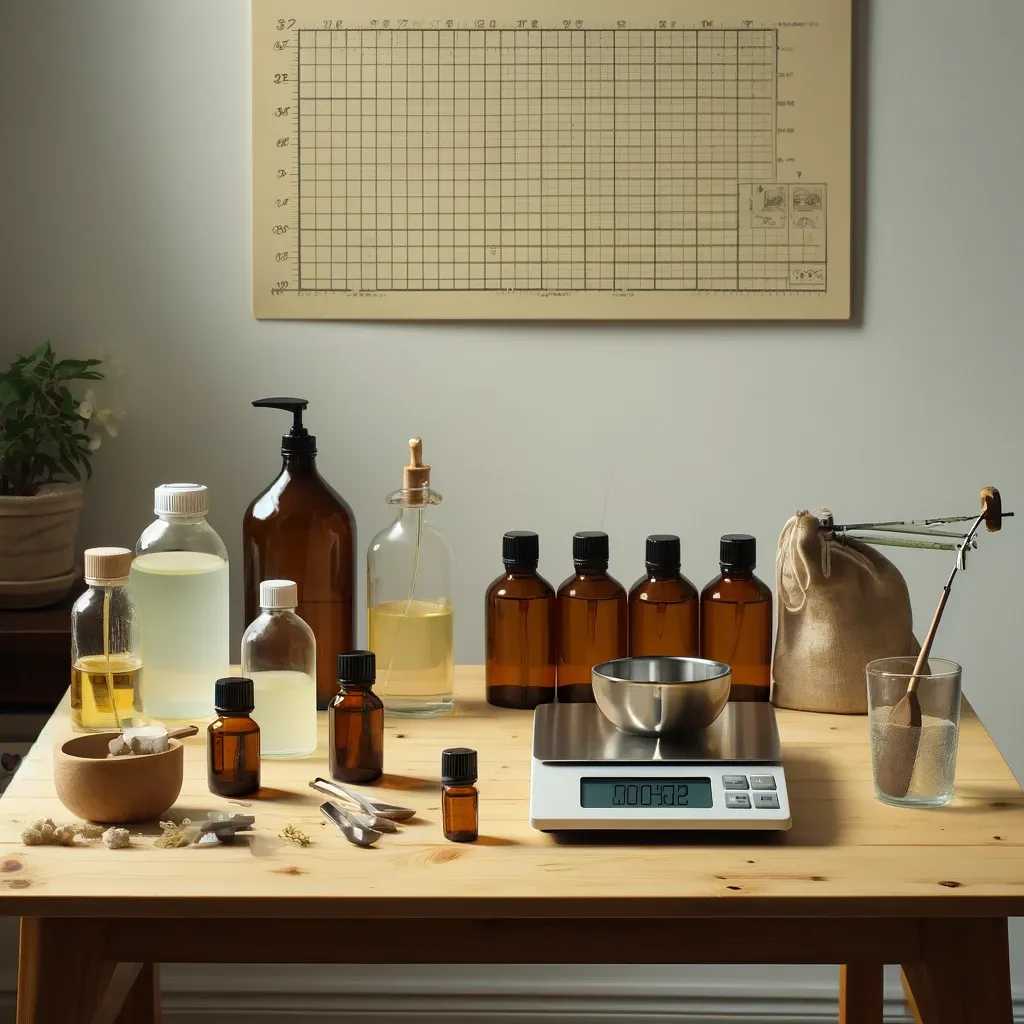Dive into the world of fragrance creation with our comprehensive guide on building your own perfume making kit. This step-by-step guide is designed to help beginners and enthusiasts alike to understand the essentials of crafting their unique scent. From selecting the finest essential oils to bottling your personal blend, we cover all the necessary steps to turn your aromatic vision into a reality. Whether you're aiming to make a statement with a bold perfume or seeking a subtle signature scent, our guide empowers you with the knowledge and techniques to achieve your fragrance goals.
Key Takeaways
A well-curated perfume making kit include high-quality raw materials.
Understanding fragrance notes and their roles is crucial for creating a balanced and harmonious scent profile in your perfume.
Choosing the right container and understanding the importance of preservation and storage can significantly enhance the longevity of your perfume.
Experimentation is key in perfume making; adjusting fragrance intensity and troubleshooting common issues are part of the learning and mastery process.
Step 1: Gathering Necessary Equipment
In the journey of Engineer Your Own Perfume: A Beginner's Guide to Perfume Making, the selection of the right equipment is crucial. Your toolkit should include items that are not reactive with essential oils to ensure the purity and longevity of your perfume.
Get yourself a scale that is precise enough to measure small quantities, as accuracy is key in perfume making.
Here's a list of the basic equipment you'll need:
Small glass or ceramic bowl for blending the perfume
Dark glass container for storing the blended oils
An elegant glass perfume bottle for your final product
Small funnel for transferring liquids (if necessary)
Measuring spoons or droppers for precise ingredient addition
It's essential to opt for glass over plastic for mixing and storage, as essential oils can degrade plastic, affecting the quality of your perfume.
Step 2: Selecting Quality Materials

When embarking on the journey of perfume making, the first and most crucial step is to select high quality raw materials. Raw materials of perfumery can be found in aromatic compund (synthetic materials) and essential oils (Natural material). These materials are the soul of your perfume, imparting unique scents and characteristics that define your final product.
Source your ingredients from reliable companies. It's imperative to ensure that the essential oils you choose are pure and have not been diluted with synthetic additives. This will guarantee the integrity of your perfume's fragrance and its longevity on the skin.
Here are some favorite picks for essential oils, categorized by their fragrance notes:
Base Notes: Earthy, grounding scents like Sandalwood and Patchouli.
Middle Notes: Floral and soft, such as Lavender and Geranium.
Top Notes: Zesty and refreshing, including Citrus blends and Peppermint.
By carefully selecting your raw materials, you're laying the foundation for a perfume that is not only personal but also of professional quality. Experiment with different combinations to find the scent that resonates with your individuality
STEP 3: Detailing Your Perfumery Formula

This stage of the process is where your creativity truly unfurls. Before anything else, define your creative directive—your "brief." It's this narrative that will guide your scent's story. Ask yourself: Are you inclined towards a bouquet of florals, the earthiness of woods, or a special blend? Whether you're aiming for an effervescent lightness or a rich, intoxicating trail, consider the character of your scent. It might reflect a single note, like Rose or Cedarwood, or a more complex symphony.
A fragrance is an alchemy of numerous components, yet to begin, it's advisable to limit your selection to a modest few, ideally under ten. This approach not only hones your skill but also honors the tradition of perfumery—a craft refined through generations and enriched by dedication.
Dedicate ample time at this juncture to crystallize your fragrance objectives. Formulas are usually denoted as a percentage of a total—100%, escalating to 1,000 or 10,000 as you delve deeper into the craft. This methodical approach allows for a deeper comprehension of each ingredient's role within your concoction and facilitates future refinement.
Pro Tip: Faithfully record every detail of your perfumery formula. The last thing you want is to forget the mix that captures your essence!
Step 4: Experimenting with Unique Combinations
The art of perfume making thrives on creativity and the willingness to explore. Experimenting with unique combinations can lead to the discovery of a truly personal and distinctive scent. Classic pairings like vanilla and bergamot or rose and resins are a testament to the enduring appeal of exploring the olfactory landscape.
Harnessing the power of both traditional methods and modern technology, such as AI algorithms, can reveal overlooked scent combinations and push the boundaries of conventional perfumery. AI systems analyze extensive libraries of ingredients, offering a new dimension to the creative process by identifying unexpected pairings that might surprise even the most experienced perfumers.
When venturing into new territories of scent creation, consider the feedback from those who have experienced a wide range of aromas. Unique, yet familiar scents that invoke different moods and preferences can guide you towards crafting a fragrance that stands out.
Understanding consumer preferences and market trends is also crucial. AI can provide insights into popular fragrances, helping you align your creations with current tastes while maintaining a unique twist. Remember, the goal is to create a perfume that resonates with individuality and artistry.
Step 5: Dilution Techniques with Oils and Alcohol
Once you have your perfume composition ready, Dilute your ingredients or composition is crucial for achieving the desired scent strength and skin safety. Dilution not only ensures that the essential oils are safe to apply to the skin but also helps in controlling the intensity of the fragrance.
For alcohol-based perfumes, begin by mixing your essential oils with alcohol. The type of alcohol used can affect the outcome of your perfume. Grain alcohol, vodka, or perfumer's alcohol are common choices, each with its own pros and cons. A typical dilution ratio is 2 parts alcohol to 1 part water, but this can be adjusted to suit your preference.
In the case of perfume oils, the dilution process involves adding essential oils to a carrier oil. Jojoba and grapeseed oils are excellent options due to their neutral scents. Here's a simple guideline for dilution percentages:
10% dilution: 60-80 drops of essential oil per ounce of carrier oil.
5% dilution: 30-40 drops per ounce.
2.5% dilution: 15-20 drops per ounce.
After diluting, it's important to let your perfume sit. This allows the scents to meld and the alcohol to mellow, resulting in a more harmonious fragrance.
Step 6: Bottling Your Signature Scent

Selecting the appropriate container for your signature scent is crucial for both aesthetic appeal and preserving the quality of the perfume. Glass bottles are the preferred choice for most perfumers due to their non-reactive nature and ability to protect the fragrance from light, especially if tinted or colored.
When considering the container, think about the size and shape that will best represent your perfume. Smaller bottles are great for samples or travel sizes, while larger ones can be used for your main product line. The type of closure is also important; a tight-fitting cap or a quality spray nozzle can prevent evaporation and leakage.
It's essential to ensure that your chosen container is leak-proof, especially if you plan to ship or transport your perfume. Many couriers require liquids to be in leak-proof containers to avoid accidents during transit.
Here's a quick checklist for container selection:
Non-reactive material (preferably glass)
Protection from light (tinted or opaque)
Appropriate size for the intended use
Quality closure to prevent leakage
Aesthetic appeal to match your brand
Step 7: Maturation: Letting Your Perfume Develop
After blending your perfume, the next crucial step is maturation. This phase is where the magic happens, as the scents meld and deepen, creating a more complex and harmonious fragrance. The maturation period can vary, but a general guideline is to allow your perfume to sit for at least 48 hours. For those seeking a more robust aroma, extending this period up to 6 weeks can significantly enhance the fragrance longevity.
During this time, it's essential to store your perfume in a dark glass container, away from direct sunlight and heat, to protect the integrity of the oils. Here's a simple breakdown of the maturation process:
Combine essential oils and alcohol or carrier oil.
Transfer to a dark glass container.
Store in a cool, dark place for 48 hours to 6 weeks.
Optionally, add botanicals for an extra touch.
Once matured, filter out any sediment and transfer your perfume to its final bottle. This is the moment when your creation truly comes to life, ready to be worn and enjoyed.
Bonus 1: Preservation and Storage Tips
Once your perfume has matured, it's time to think about preservation and storage to maintain its quality. A dark amber bottle is ideal for protecting your scent from light, which can degrade the fragrance over time. The type of container you choose can also affect the longevity of your perfume. For example, if you're making a roll-on oil, cap it with the rollerball lid to prevent oxidation. Similarly, for an essential oil body spray, attaching a spray top is essential to preserve the scent's integrity.
The maturation process is crucial for developing a full-bodied fragrance. Allowing your perfume to sit for a period ranging from 48 hours to 6 weeks will enable the scents to meld and deepen.
When transferring your perfume to its final container, consider the method of application. A spritzer bottle is perfect for daily use, while adding distilled water can transform your creation into a refreshing body spray. For a unique touch, infuse your perfume with flower petals or botanicals during the aging process to enhance its aesthetic and olfactory appeal.
Bonus 2: Labeling and Personalizing Your Perfume
Once you've created a scent that captures your essence, it's time to give it a home that's just as unique. Choosing the right container is crucial, not just for aesthetics but also to protect the quality of your perfume. Glass is often preferred for its non-reactive properties, ensuring the scent remains pure and unaltered.
After selecting the perfect bottle, the next step is to label your creation. This is where you can let your creativity flow. You can opt for blank or custom labels to add a professional touch or handwrite them for a more personal feel. Labels are not just about the name; they can include details like the date of creation, the notes used, or even a special message if it's a gift.
When it comes to labeling, consider the longevity and legibility of the materials you use. A smudge-proof and water-resistant label will ensure that your perfume bottle maintains its elegance over time.
Finally, personalizing your perfume goes beyond the label. It's about creating a connection between the scent and the individual. Whether it's a name, a date, or a simple design, this final touch is what truly makes it your signature scent.
Bonus 3: Advanced Tips and Troubleshooting

Bonus 4: Adjusting Fragrance Intensity
The intensity of your perfume is a delicate balance that can be fine-tuned to your preference. Start with a conservative amount of essential oils and gradually increase the concentration until the desired strength is achieved. This incremental approach prevents overpowering the blend and allows for precise control over the final scent profile.
To adjust the intensity, consider the concentration levels of different types of perfumes:
Perfume: 15-30% fragrance
Eau de parfum: 8-15% fragrance
Eau de toilette: 4-8% fragrance
Eau de cologne: 2-5% fragrance
By understanding these categories, you can create a fragrance that suits your desired potency, whether it's a subtle eau de cologne or a more pronounced perfume.
Remember, the maturation process also affects the intensity. Allowing your perfume to develop over time can result in a more harmonious and rounded fragrance. If after maturation, the scent is still not as strong as you'd like, you can add more essential oils to amplify the fragrance.
Bonus 5: Dealing with Common Perfume-Making Issues
When embarking on the journey of perfume creation, it's crucial to be aware of common pitfalls that can affect the final product. Inconsistencies in measurement and process can drastically alter a fragrance. It's important to use precise scales for measuring materials to ensure that each batch of perfume maintains the same quality and scent profile.
Perfume making is not just about combining scents; it's about understanding the chemistry behind the fragrances. For instance, certain ingredients like ethyl alcohol and citral are used not only for their scent but also for their properties, such as insect repellency or enhancing organoleptic characteristics. A well-informed approach to selecting and combining ingredients is essential for a successful blend.
Experimentation is key in perfecting your perfume. Start by choosing oils from each fragrance note category and combine them in the recommended 30/50/20 ratio. After blending, allow your perfume to mature, as this will enable the scents to meld harmoniously.
Lastly, storage and bottling play a significant role in the longevity of your perfume. Opt for dark amber bottles to protect your creation from light, which can degrade the fragrance over time. Remember, the best perfumes come in small packages, as they are more likely to be used before they lose their potency.
Bonus 6: Exploring Further Educational Resources
Once you've mastered the basics of perfume making, it's time to deepen your knowledge and skills. Online courses are an excellent way to continue your education. Platforms like Udemy offer a variety of classes, including the highly-rated 'Fully Accredited-Perfume Course for Beginners 2024'. This course promises to teach you how to create formulas and make perfume at home like a professional.
For a more personalized learning experience, consider joining a masterclass or a mastermind group. Karen Gilbert, a renowned fragrance expert, offers courses both in the UK and online. Her Artisan Perfumery Mastermind is designed to demystify the art of perfumery in an engaging and interactive manner, allowing you to explore your olfactory sense and craft unique fragrances.
If you're looking for a guarantee of quality, look for programs that offer a money-back guarantee. This not only ensures the credibility of the course but also provides peace of mind as you invest in your perfume-making journey.
Conclusion
Embarking on the journey of creating your own perfume is an adventure that blends art and science, allowing you to express your individuality through scent. This step-by-step guide has equipped you with the knowledge to choose the right oils, blend them in harmonious ratios, and dilute them to perfection. Remember, the beauty of DIY perfume making lies in the freedom to experiment and the joy of watching your fragrance evolve over time. Whether you're crafting a signature scent for personal use or as a thoughtful gift, the process is as rewarding as the outcome. Embrace the tips, explore the recipes, and let your creativity lead the way to a perfume that's uniquely yours.
Frequently Asked Questions
What are the essentials I need to start making my own perfume?
To start making your own perfume, you'll need quality essential oils, a carrier oil, and necessary equipment such as measuring tools, droppers, and bottles for blending and storing your creations.
How do I choose the right essential oils for my perfume?
Select essential oils based on the fragrance notes you prefer: earthy base notes, fruity and floral middle notes, and light, citrusy top notes. Experiment with 1-2 oils from each category to create a balanced scent.
What is the 30/50/20 ratio in perfume making?
The 30/50/20 ratio refers to blending 30% base notes, 50% middle notes, and 20% top notes to create a harmonious scent. This is a starting point, and you can adjust the proportions to suit your preference.
How long should I let my perfume develop before using it?
Let your perfume develop for at least 48 hours to several weeks. This maturation process allows the scents to meld and evolve, resulting in a more complex and well-rounded fragrance.
How can I make my perfume last longer on my skin?
To make your perfume last longer, use a higher concentration of essential oils, apply to pulse points, and ensure your skin is moisturized before application. Storing your perfume in a cool, dark place can also preserve its potency.
What should I do if my homemade perfume doesn't smell as expected?
If your perfume doesn't smell as expected, adjust the fragrance intensity by tweaking the essential oil ratios, dilute further if needed, and give it more time to mature. Remember, perfumes can smell different on everyone due to body chemistry.


